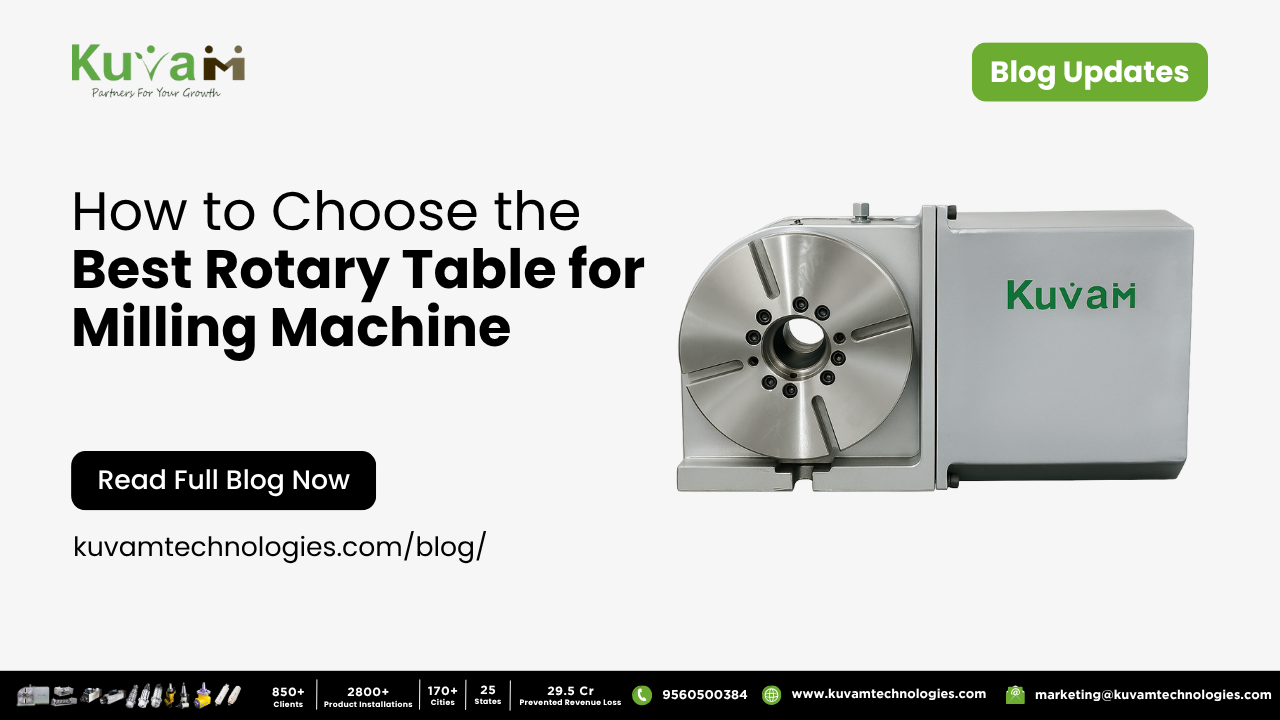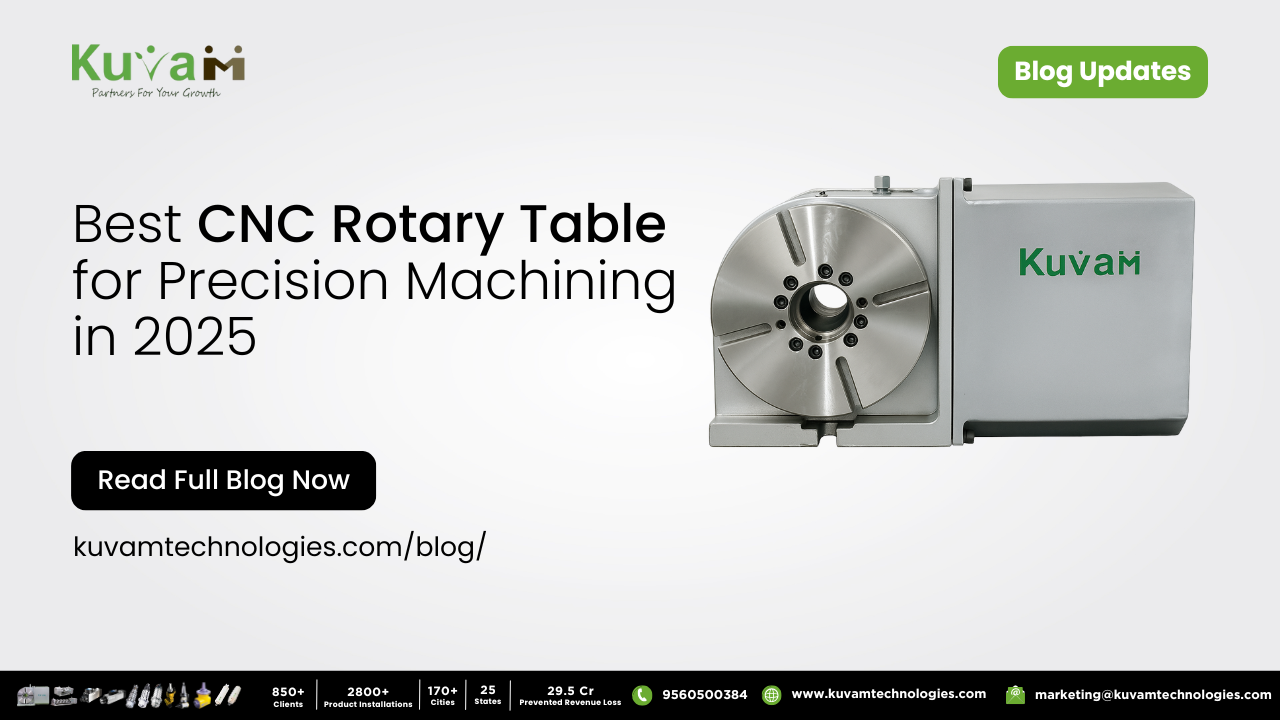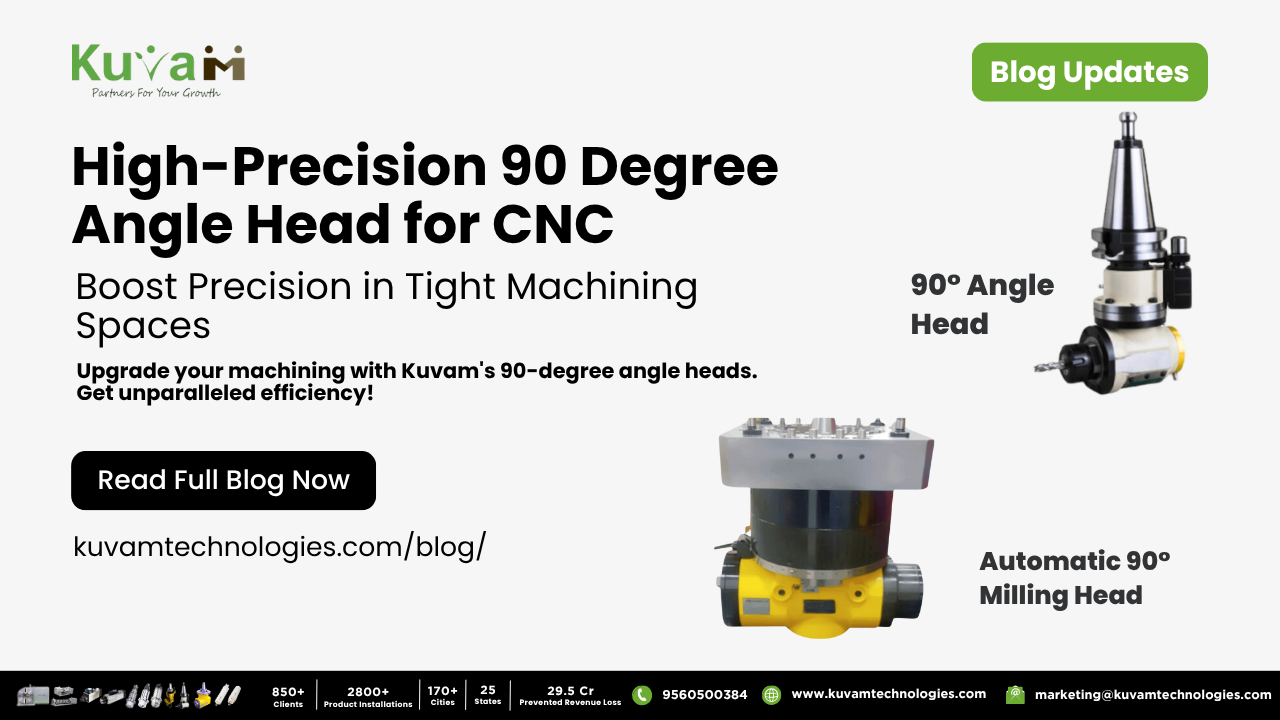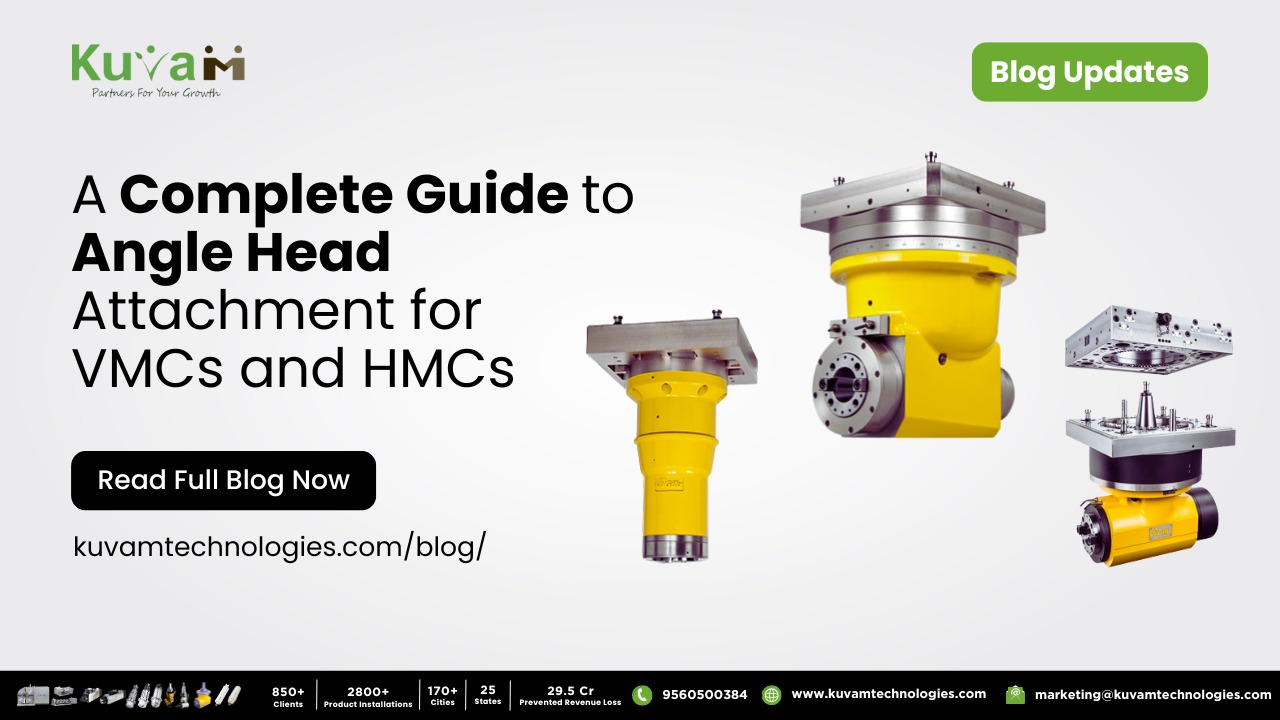Your Friendly Guide from Kuvam Technologies
If you’re working with a CNC milling machine and looking to expand its capabilities, you’ve probably come across something called a rotary table. But what exactly is it? Do you need one? And more importantly, how do you choose the Best Rotary Table for Milling Machine?
At Kuvam Technologies, we get these questions all the time, and we’re here to help. Whether you’re running a busy machine shop or just starting, this guide will walk you through everything you need to know in plain language—no jargon overload.
Let’s know how you choose the Best Rotary Table for Milling Machine?
🌀 What Is a Rotary Table, and Why Should You Care, and Which Is the Best Rotary Table for Milling Machine?
Think of a rotary table as the “lazy Susan” of your CNC machine—but way more precise. It rotates your workpiece so that the cutting tool can access different angles without you having to stop and reposition the material every time. This small upgrade can lead to big savings in time, effort, and accuracy.
A CNC rotary table is basically a powered version that connects with your machine’s controller, giving you full automation. And when you add it to your milling machine? Boom—you now have a 4th axis.
🔍 So, Why Use a 4th Axis Rotary Table?
Great question! Adding a 4th axis rotary table opens up a whole new world of machining possibilities. Here’s what it does for you:
- ✅ Fewer Setups – No more turning parts manually for multiple faces.
- ✅ Higher Accuracy – You reduce human error because everything stays clamped in one go.
- ✅ More Complex Parts – You can now make curves, gears, and detailed contours.
- ✅ Better Surface Finish – Smooth rotational cuts mean smoother parts.
It’s like giving your CNC machine a superpower.
🎯 What Makes a Rotary Table the “Best” for CNC Milling?
There’s no one-size-fits-all answer here. The Best Rotary Table for Milling Machine depends on your specific jobs and setup. But here are a few things to think about:
Size Matters
Choose a rotary table that fits your machine and your parts. Too big, and it’ll get in the way. Too small, and it won’t handle your workload.
Precision
If you’re doing high-accuracy jobs (like aerospace or medical), you’ll need a precision rotary table with tight tolerances.
Mounting Style
Do you need a horizontal table? Vertical? Or maybe a tilting one for 5-axis work? Know what your parts demand.
Indexing & Control
For batch work or automation, a rotary indexing table with servo control is a great choice. Manual versions are okay for simpler jobs.
🔩 Where Do Rotary Tables Shine?
Rotary tables are used in all kinds of industries. Here’s how different sectors benefit:
- Automotive: Great for parts like camshafts and gears.
- Aerospace: Ideal for complex turbine components.
- Medical: Perfect for precision parts with tight tolerances.
- Toolmaking: Enables fine detailing and mold creation.
Basically, if your job needs curved cuts, holes at angles, or round contours, a rotary table can handle it like a champ.
🏭 Rotary Table Options at Kuvam Technologies
At Kuvam Technologies, we offer a wide selection of CNC rotary tables built for VMCs and HMCs. Here’s what we’ve got:
- 🔧 Standard Rotary Tables – Rugged, reliable, and built for general CNC work.
- 🔩 4th Axis Rotary Tables – For high-precision machining and contouring.
- ⚙️ Rotary Indexing Tables – Great for automated drilling or repetitive part production.
- 🚀 Customized Rotary Tables – Have a unique job? We’ll build it for you.
All of our products come with strong after-sales support and integration assistance, because we care about more than just selling a machine part.
💡 Real Talk: Do You Need a Rotary Table?
If your machining work involves:
- Frequent part repositioning
- Multi-side machining
- Contour or circular milling
- Time-consuming setups
Then yes, you’ll benefit from a rotary table. It’s not just a fancy add-on—it’s a time-saving, money-making upgrade that boosts both efficiency and accuracy.
👨🏭 Let’s Make This Easy
Still unsure about which table to choose? That’s what we’re here for.
At Kuvam Technologies, we don’t believe in one-size-fits-all. Our team will ask about your machine, your parts, your goals, and we’ll recommend the Best Rotary Table for Milling Machine based on real needs, not just specs on paper.
📞 Ready to Talk?
Choosing the right rotary table doesn’t have to be stressful. Get in touch with our experts today and let’s find the right solution for your workshop. We’ll help you unlock the true potential of your CNC setup—with performance you can count on.
👉 Visit www.kuvamtechnologies.com or give us a call. We’re ready when you are.
✅ FAQ Section
1. What is a rotary table used for in CNC milling?
A rotary table allows your CNC milling machine to rotate the workpiece around a fixed axis. This enables circular cutting, contouring, and multi-angle drilling—all without manually repositioning the part.
2. What’s the difference between a 4th axis rotary table and a regular one?
A 4th axis rotary table is motorized and integrates with your CNC controller, allowing automatic rotation during machining. A regular rotary table may be manual or semi-automatic and lacks this level of automation.
3. How do I choose the best rotary table for my CNC machine?
Consider your machine’s size, the type of jobs you run, desired precision, mounting style (horizontal/vertical), and whether you need indexing features. If in doubt, consult our team at Kuvam Technologies.
4. Can a rotary table be used on a VMC?
Yes! Rotary tables are commonly used on VMCs (Vertical Machining Centers). They allow multi-side machining and eliminate the need for multiple setups.
5. Is it difficult to install a rotary table on my machine?
Not at all. Our rotary tables are designed for seamless integration. We also offer expert support to guide you through the setup and programming process.




